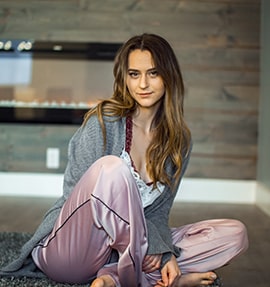The visual arts are not at all stagnant. Rather dynamic, they ride on the crest of the waves of History, luckily for us, even in modern times. The evolution from abstract painting to form is what artistic sensitivity achieved between the end of the last century and the beginning of the current one. Back in the Seventies creative fantasy seemed to be tied up with the infinite realm of non-form, whether geometrical or material. The canvas was abandoned to exalt objects, theatricality, and installed scenes. Minimalist evaporation opposed conceptuality. And yet painting and the drawing behind it, the desire to represent truth or the fantasy of a truth one had merely dreamed, in a word, all the baggage condensed over the millennia resurfaced to generate life, bubbling up again like an entire magmatic cosmos. Antonietta Innocenti is both a witness and protagonist in this page of history which, though open to be read, has not as yet been fully fathomed.
She is also a woman, an artist and a painter. And women, luckily for human kind, are different from men. With differences as old as time itself, at the very outset the two sexes were destined to excel in rather different ways. Women were wired at the neuronal level to carry out various jobs at the same time, expressing themselves in various languages, at least apparently, endowed by Nature with the capacity for multitasking. The male, on the other hand, was wired much more simply. He could thus dedicate himself to many tasks, from hunting to painting, carrying out, however, only one at a time.
In a most intriguing fashion, the Twentieth Century discovered that this was the very essence of “feminine” art. Multitasking in such an art thus became a game, but also a need intrinsic to the act itself of creating, an anthropological necessity one might say. In so doing, painting alone was not enough. One had to draw with irony, paint with determination, mould the clay to be baked and imagine everyday objects to be created. Every pathway was meant to stimulate this parallel. In the natural complexity of her exploration, Antonietta Innocenti took on the very mutability of expressive language.
The long season of abstract art that had taken the West by storm found Antonietta Innocenti bent on developing her own style of painting. She came up with chromatic transparency in a multiplicity of diaphanous layers, vibrant fields that welcomed back an element that had hitherto been exiled – form. The compositions she produced concealed an authentic provocation. Even though nakedness and the human body had seemed doomed to be judged as obsolete with no appeal, she found the courage to place them again in her painting, to superimpose them on abstract landscapes as if some memory of drawing techniques of times long past had come back to life. These faces timidly peering out from behind abstract curtains, like memories muddled in their anguish, gradually became bolder and bolder. Sitting bodies stretched out to show their nakedness without shame and, finally, women’s faces defiantly started showing themselves in the foreground with lips that were once again full and red to celebrate their status as protagonists.
In such a vast, frantic operation, there is something rather peculiar, as if there were an unexpected inclination towards conversation. Various disciplines combine and communicate producing pondered works and ironic games. Painting and sculpture require reflection to be created and understood. Drawing allows thought and gesture to be quick. It thus allows irony to produce a smile, for irony may indeed guarantee levity, which is not, however, to be confused with superficiality. Levity is above all contained within the soul. It is a way of living and taking on the world. It is a state of grace which, in Antonietta Innocenti’s long creative journey, exists in full plenty. Grace, thank god, is the quality lacking in the centurion. It is, instead, typical of the young girl of ancient Rome, the quality once called pulchritude. Antonietta Innocenti’s work possesses it in abundance.











